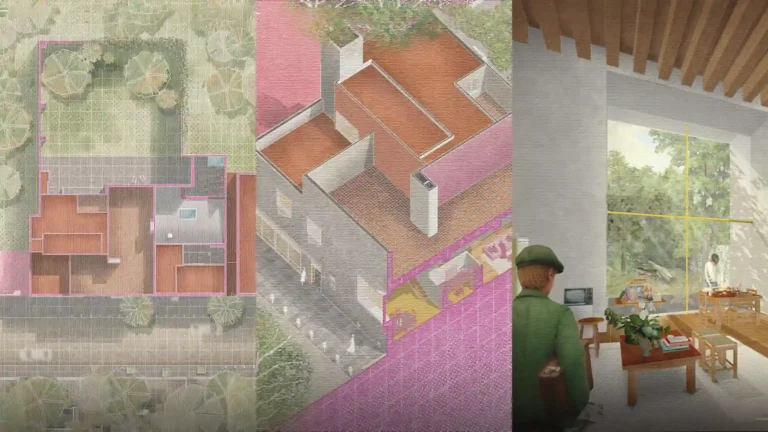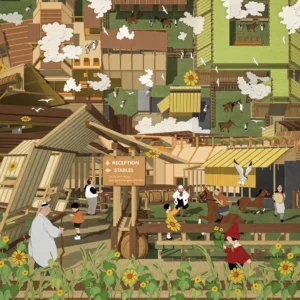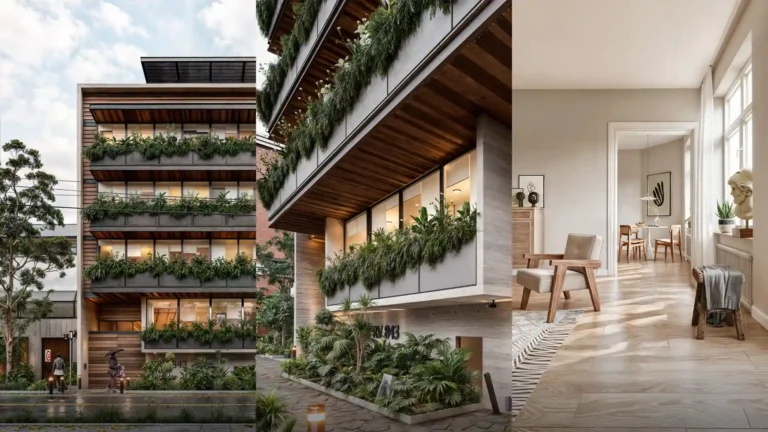MEC. Muncipalidad de Estacion Central / Lucas Knust, Thomas Wanckel, Mario Rojas
Related posts

- Architect: Lucas Knust, Thomas Wanckel, Mario Rojas
- Location: Santiago, Chile
- Project: Public architecture
- Software: Autocad, Lumion, Photoshop, V-Ray
Over the past decade, a combination of political, regulatory, and economic conditions has led to an increase in high-density real estate projects, known as “vertical ghettos,” in the commune of Estación Central. Poor public management, coupled with uncontrolled hyper-densification of land, has resulted in negative consequences: outdated and disjointed public space and infrastructure, a lack of green spaces, and an absence of recreational and social programs, ultimately leading to a reduced quality of life for its residents. Among the public infrastructure cases in the commune, the Estación Central Municipal Building, designed and built during the second half of the last century, exhibits technological and programmatic obsolescence that reflects the daily challenges of its inhabitants. Completely enclosed by a perimeter fence, surrounded on one side by overcrowded parking lots with cars, and with labyrinthine and fragmented interior spaces hindering communication and workflow between different departments, the building does not make optimal use of its maximum capacity.

Consequently, it becomes a place with low permanence, not perceived as a space serving the needs of the residents. The deterioration and programmatic obsolescence are also evident in the inefficient use of energy, inconsistent with environmental needs. In winter, the solid and impenetrable north facade transforms spaces into cold and poorly lit areas, exacerbating heating issues. In summer, the same facade and metal roof hinder air circulation, creating a concentration of high temperatures, necessitating the use of fans. Additionally, the only green area is the front yard covered with grass, which is not water-conscious and does not provide shade on hotter days. We see the physical and technological renovation of the Estación Central Municipal Building as an opportunity to transform it into a public asset within the commune. This includes programmatically enhancing its interior and nearby exterior, opening its doors to both employees and residents, promoting and strengthening its identity and service to the community.

An Efficient, Coordinating, Comfortable, and Green Public Building The land designated for a municipal building should be seen as an opportunity to actively engage with the commune. Given the current characteristics of the location of the Estación Central Municipality, the proposal is to provide this public space with a new municipal program that defines its foundational programmatic role. Focused on the recovery of the surroundings of the Municipality, the urban strategy involves creating sustainable public axes that incorporate renewable energy, green areas, and recycling points, both at the pedestrian and vehicular levels, opening the way to articulate a currently fragmented network. The axis of Libertador Bernardo O’Higgins Avenue is reorganized with a restructuring of public transport routes, and the existing cycle lane on General Velásquez Avenue is rehabilitated and expanded. To strengthen the area as a focal point within the commune, a social integration sports area is projected in the existing site in front of the building, promoting recreational programs. These actions are accompanied by a green landscape designed with low-water-consumption species that provide shade and color to currently limited and disjointed spaces in the urban environment.

The use of photovoltaic panels on the roofs of tall buildings is also considered to supply renewable energy to the commune. On the other hand, the municipal building presents a quality but obsolete physical infrastructure that needs to be energetically retrofitted according to new standards of thermal comfort, lighting, and ventilation to facilitate municipal processes. The intervention project envisions a programmatic, environmental, technological, and energy renovation that transforms it comprehensively, understanding it as a new open urban piece that seeks to activate throughout the year as a civic, communal, neighborhood, and multipurpose platform. For the reconversion, adaptation, and programmatic enrichment of the Estación Central Municipality, its circulations and office areas are reorganized, allowing the projection of new spaces such as a large public central void, urban gardens, multifunctional, and cultural spaces.
Project gallery
Material
Fabric, steel, wood
#tags
Related posts
Recommended courses
Essential resources
-
Sale!

Pay 2 Take 4
$ 20,00Original price was: $ 20,00.$ 10,00Current price is: $ 10,00. Add to cart -
Sale!

Pot plant cut outs
$ 10,00Original price was: $ 10,00.$ 5,00Current price is: $ 5,00. Add to cart -
Sale!

Trees Roots – GO
$ 10,00Original price was: $ 10,00.$ 5,00Current price is: $ 5,00. Add to cart -
Sale!

Site Analysis GO
$ 10,00Original price was: $ 10,00.$ 5,00Current price is: $ 5,00. Add to cart
Recommended Courses
Essential resources
-
Sale!

Pay 2 Take 4
$ 20,00Original price was: $ 20,00.$ 10,00Current price is: $ 10,00. Add to cart -
Sale!

Pot plant cut outs
$ 10,00Original price was: $ 10,00.$ 5,00Current price is: $ 5,00. Add to cart -
Sale!

Trees Roots – GO
$ 10,00Original price was: $ 10,00.$ 5,00Current price is: $ 5,00. Add to cart -
Sale!

Site Analysis GO
$ 10,00Original price was: $ 10,00.$ 5,00Current price is: $ 5,00. Add to cart -
Sale!

32 PATTERNS – GO
$ 10,00Original price was: $ 10,00.$ 5,00Current price is: $ 5,00. Add to cart -
Sale!

Colorful people
$ 10,00Original price was: $ 10,00.$ 5,00Current price is: $ 5,00. Add to cart -
Sale!

CARTOON TREES
$ 6,00Original price was: $ 6,00.$ 3,00Current price is: $ 3,00. Add to cart -
Sale!

URBAN ISOMETRIC MEGAPACK
$ 10,00Original price was: $ 10,00.$ 5,00Current price is: $ 5,00. Add to cart















